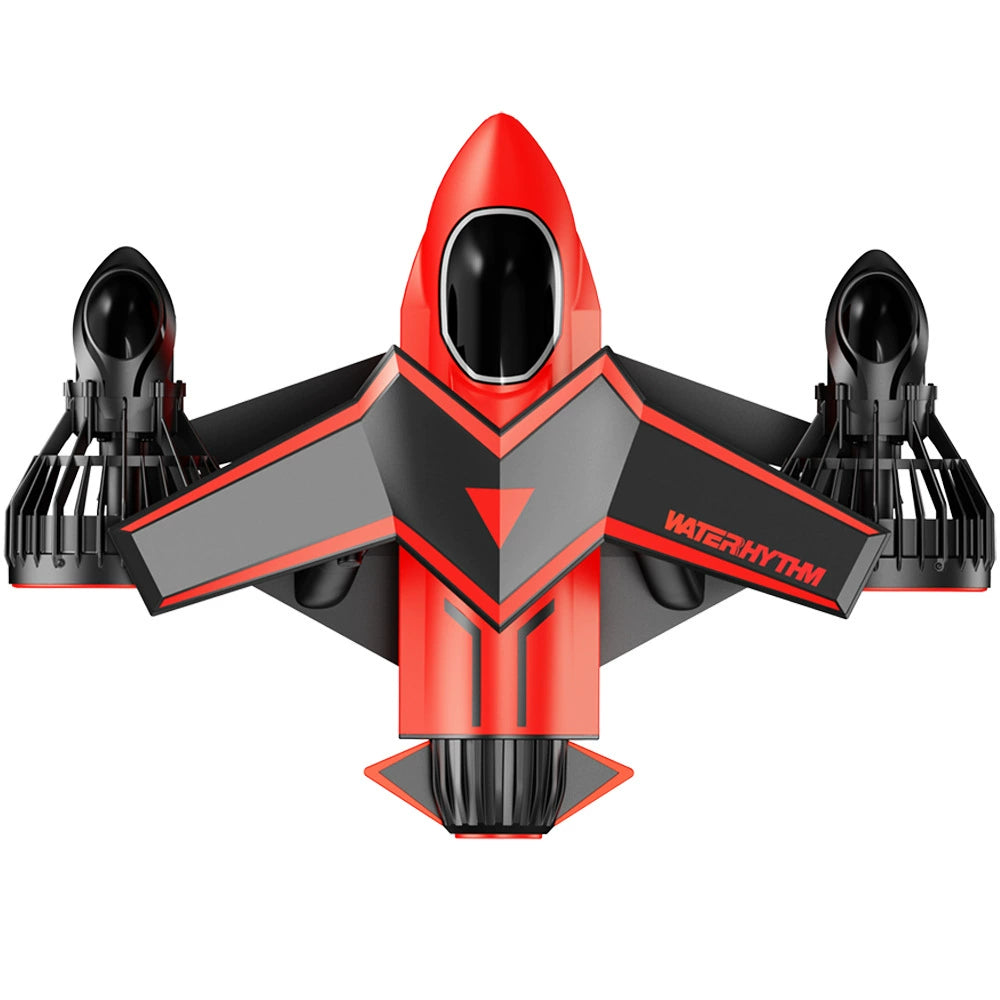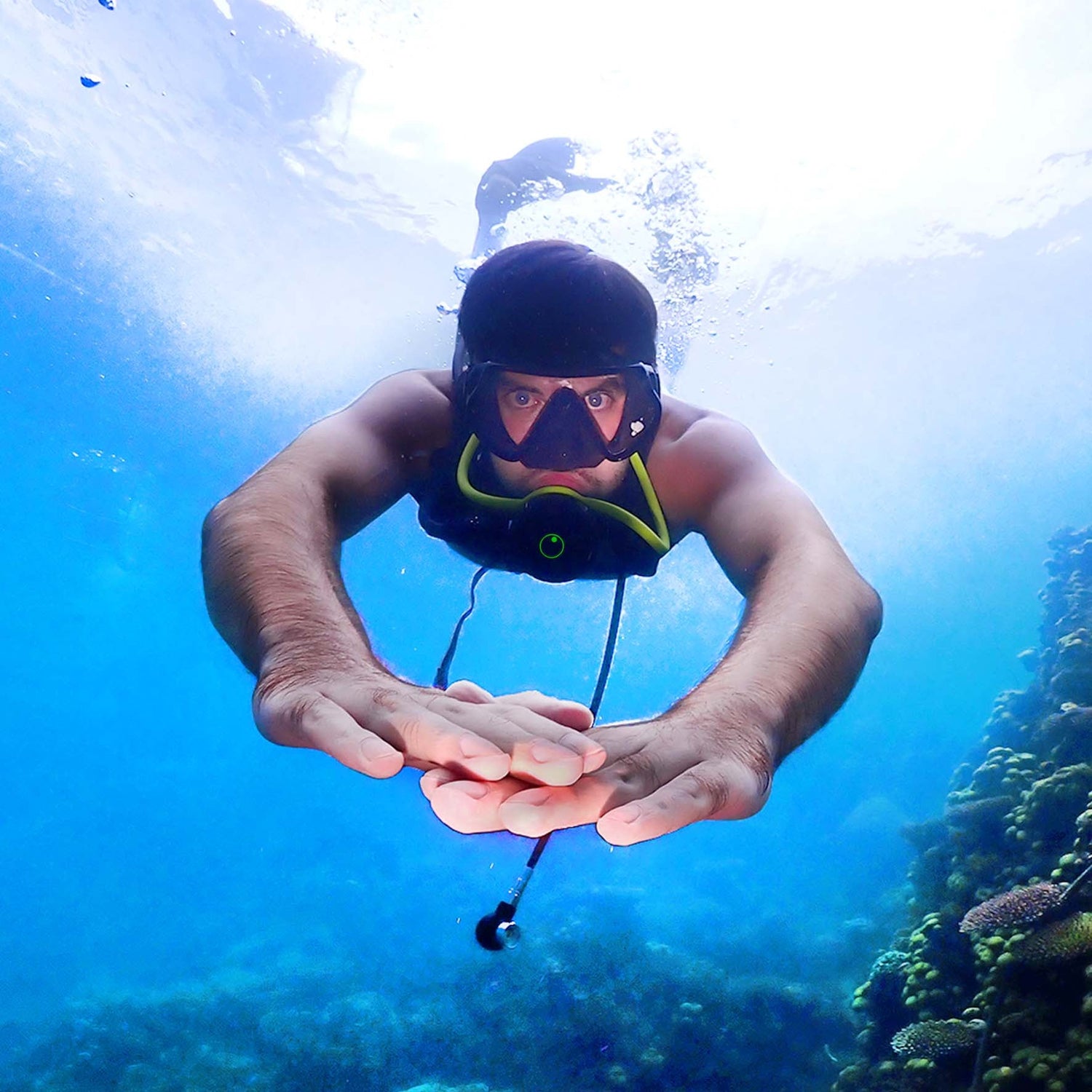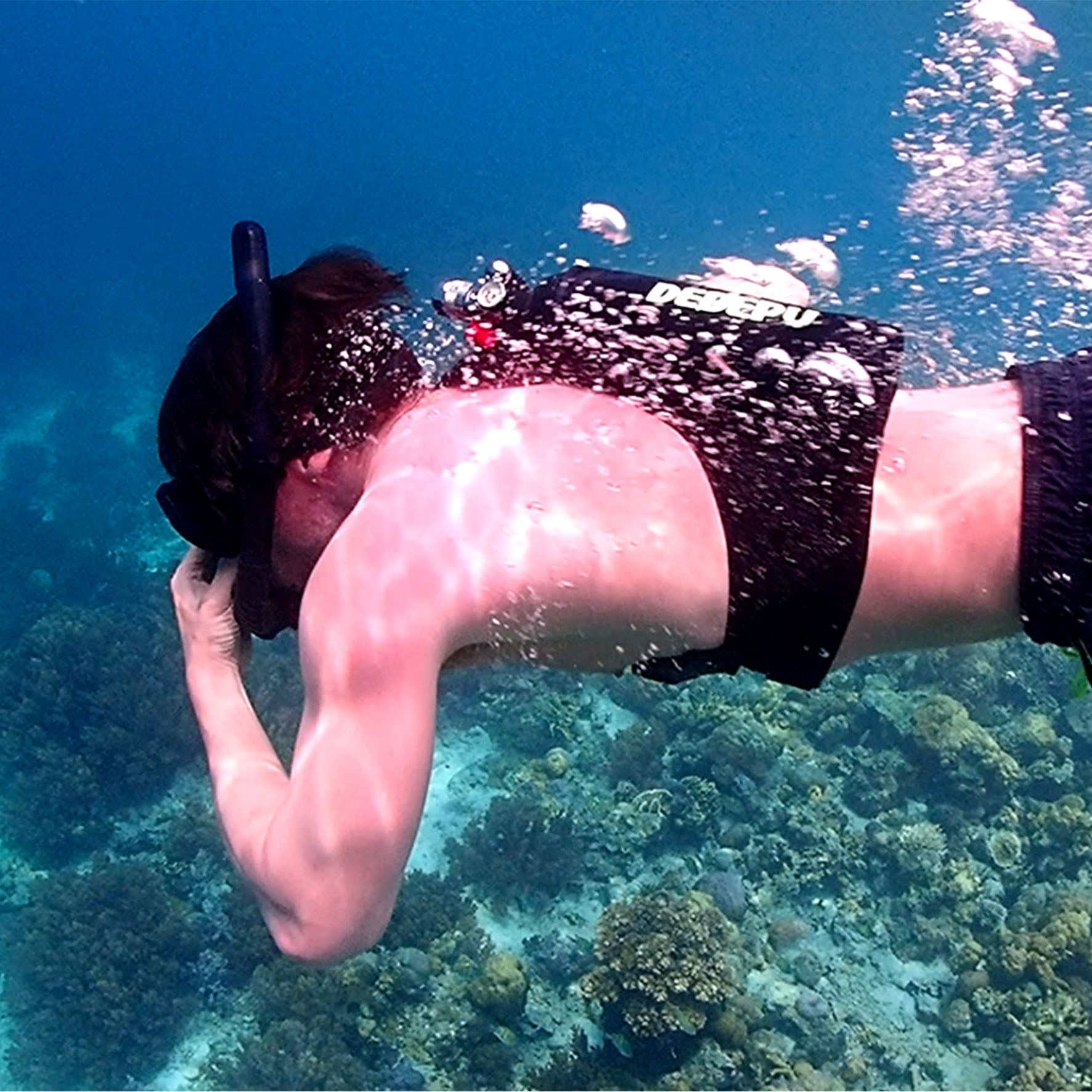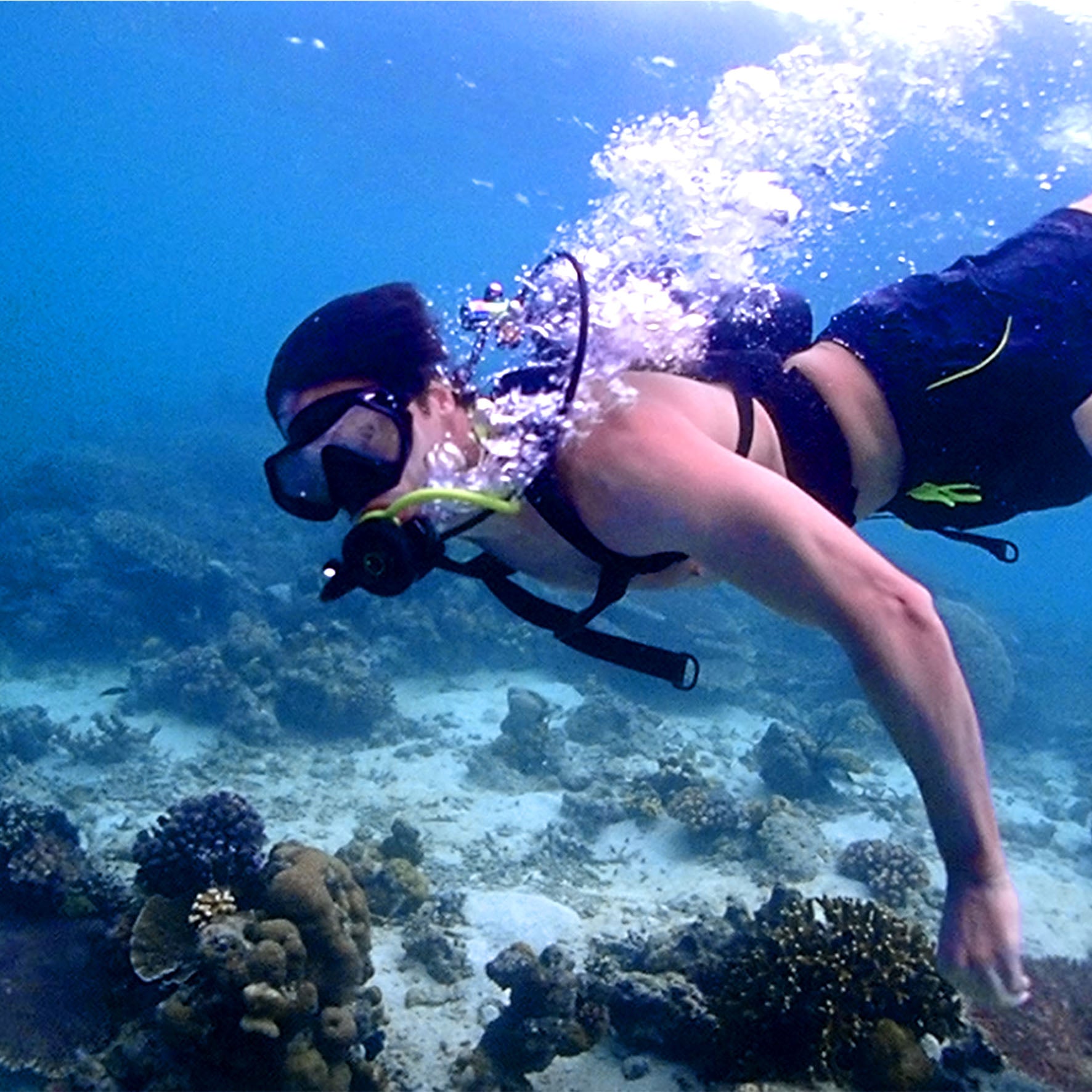While both fill to similar high pressure (around 3000 PSI/207 bar), their physical differences significantly impact your dive. A mini tank is vastly smaller and lighter, perhaps weighing just 10-15 pounds (4.5-7 kg) full versus 30-40 pounds (14-18 kg) for a full standard tank. This portability comes at a cost: air time. An average diver at 30 feet (10 meters) might get only 5-10 minutes from a mini tank, compared to 45-60 minutes from a standard tank.
Size & Weight on Land
A typical aluminum 80 cubic foot (11.1 L water capacity) standard scuba tank stands approximately 26 inches (66 cm) tall with an outer diameter of roughly 7.25 inches (18.4 cm). In contrast, a common 6 cubic foot (0.85 L water capacity) aluminum mini tank might only measure about 12 inches (30.5 cm) in height and 4 inches (10.2 cm) in diameter – think large water bottle versus a piece of carry-on luggage. This massive size reduction translates directly to weight: while a full standard aluminum 80 ft³ tank weighs between 36 to 42 pounds (16.3 to 19.1 kg) due to its water capacity of ~11.1 liters holding dense, pressurized air at 3000 PSI (207 bar), a full 6 ft³ mini tank typically weighs just 10 to 12 pounds (4.5 to 5.4 kg) despite being filled to that identical 3000 PSI/207 bar pressure rating. Empty weights diverge similarly – a standard might be 31-35 lbs (14-16 kg) empty versus a mere 6-8 lbs (2.7-3.6 kg) for the mini.
This >70% reduction in mass fundamentally changes portability. You can easily carry two mini tanks one-handed (up to ~24 lbs / 10.9 kg total) over short distances without significant fatigue, whereas moving a single standard tank often requires a dedicated tank carrier, wheeled cart, or two hands due to reaching near the ~40 lb (18 kg) threshold where ergonomics demand better handling solutions. Packing space requirements drop drastically too: four standard tanks occupy approximately 5.5 cubic feet (156 liters) of trunk space – a significant volume chunk in most compact cars – while stacking three mini tanks fits comfortably within just 0.7 cubic feet (20 liters), often nestling easily in a gear bag corner. The compact profile also makes minis vastly easier to stow securely on crowded dive boats or during aircraft transport where every inch (2.54 cm) counts. While steel tanks (both standard and mini) offer 5-10% lower empty weight than aluminum equivalents for equivalent gas volumes due to material density differences and thinner wall requirements, their size dimensions remain broadly comparable to aluminum counterparts within the same gas capacity categories.
Air Capacity
While both tanks pressurize to 3,000 PSI (207 bar), a standard 80 ft³ (11.1-liter internal volume) aluminum tank contains 13.3× more breathable air mass than a 6 ft³ (0.85 L) mini—equivalent to 5,900 liters of surface air vs. 443 liters at depth. This disparity magnifies underwater due to depth-pressure relationships: every 33 ft (10 m) of descent doubles ambient pressure, doubling air consumption rates. An average diver with a Surface Air Consumption (SAC) rate of 0.75 ft³/min (21.2 L/min) at the surface will burn ~1.5 ft³/min (42.5 L/min) at 33 ft due to compressed air density.
Mini Tank Reality Check:
At 20 ft (6 m)—a typical snorkeling backup depth—a mini tank delivers ~10–12 minutes of bottom time for a calm diver. But at 33 ft, duration collapses: 6 ft³ ÷ 1.5 ft³/min = 4 minutes. Factoring in mandatory reserves (500 PSI, equating to ~100 liters/3.5 ft³ for minis), ascent air (0.4 ft³ burned over a 2–3 minute slow climb), and a 3-minute safety stop at 15 ft (0.5 ft³ consumed), net bottom time plunges to <2 minutes. Cold water (<60°F/15°C), stress, or mild exertion can spike consumption to 1.8–2.0 ft³/min, slashing usable time to under 90 seconds at recreational depths. Steel minis (e.g., 3L cylinder with ~18 ft³ capacity) extend this marginally to ~6 minutes at 33 ft, but still pale next to standards.
Standard Tank Performance:
An 80 ft³ tank provides robust operational margins. At 33 ft, a diver’s 1.5 ft³/min burn rate allows 53 minutes of raw bottom time. After deducting reserves (500 PSI ≈ 16.7 ft³ / 21% of capacity), ascent gas (1.0 ft³), and safety stop air (1.2 ft³), ~45 minutes remain for exploration. Experienced divers with low SAC rates (0.5–0.6 ft³/min) can stretch this to 65–80 minutes. Even at 66 ft (20 m), where pressure triples consumption (~2.25 ft³/min), the tank sustains ~18 minutes after reserves—more than triple a mini tank’s capability at half that depth.
Operational Variables & Limitations:
Depth Penalty: Every additional 10 ft (3 m) below 33 ft reduces mini tank bottom time by ~33% vs. ~20% for standards.
Human Variability: Heavy finning or task loading can double SAC rates (1.5 → 3.0 ft³/min), instantly truncating a mini dive to <45 seconds at depth.
Temperature Impact: Water below 55°F (13°C) accelerates air consumption by 15–30% due to thermal stress.
Safety Reserves: The 500 PSI rule disproportionately affects minis—reserves consume ~16.7% of a 6 ft³ cylinder’s air versus just 6.25% of an 80 ft³ tank’s volume.
In essence: Mini tanks function as emergency backups or shallow-work tools for durations measured in single-digit minutes, while standards deliver multiples of that runtime with practical reserves for deeper exploration.

Pressure Inside
Seeing 3,000 PSI (207 bar) on both a 6 ft³ mini and an 80 ft³ standard tank is deceptive—identical pressure doesn’t mean equivalent air volume. Pressure measures gas compression force, while usable air depends on tank volume × pressure. At 3000 PSI, the 6 ft³ mini contains 2,300 liters of compressed air, whereas the 80 ft³ standard holds 23,400 liters—over 10× more at the same gauge reading. This discrepancy occurs because pressure gauges only measure gas density, not total mass.
Why Identical PSI ≠ Identical Capacity:
Tank volumes are defined by internal water capacity. An aluminum 80 ft³ cylinder physically displaces 11.1 liters of water to earn its rating, while a 6 ft³ mini displaces only 0.85 liters. Pressurizing both to 3,000 PSI forces 80 times more air molecules (4.2 kg vs. 0.35 kg) into the larger tank’s space—equivalent to stuffing 10 basketballs into a storage bin versus 1 tennis ball at identical compression tightness. Standard cylinders use thinner 0.45-inch (11.4mm) walls but compensate with 7.25-inch (184mm) diameters to safely contain this mass, while minis rely on thicker 0.6-inch (15.2mm) walls to endure pressure in compact forms.
Gauge Behavior in Practice:
During a dive at 33 ft (10 m), both tanks lose pressure at similar rates per breath—a diver drawing 1.0 ft³ of air consumes 6% of a mini’s total capacity per breath vs. just 0.5% of a standard’s—but gauge needle velocity differs drastically. A mini’s pressure plummets visibly: each 200 PSI drop eliminates ~4 minutes of bottom time at depth. Contrast this with standards, where losing 500 PSI (from 3,000 to 2,500 PSI) still retains ~89% of usable air. Valve position also matters: cold water causing ±10°F (5.5°C) shifts can temporarily distort readings by ±150 PSI (±1%) due to gas contraction/expansion. Divers often misjudge minis as "half-full" at 1,500 PSI, yet this represents just ~0.8 minutes of runtime at moderate depths.
Pressure Decay Patterns:
| Tank Type | Volume @ 3,000 PSI | PSI Loss = 1 min @ 33 ft | Pressure Drop Rate | Reserve Safety Margin (500 PSI) |
|---|---|---|---|---|
| 6 ft³ Mini | 150 liters/100 PSI | ~120 PSI/min | 3.8 mm/sec on analog gauge | 33% of total tank content |
| 80 ft³ Standard | 7.8 liters/100 PSI | ~15 PSI/min | 0.48 mm/sec | 6.25% of content |
Calibration & Accuracy:
High-pressure gauges exhibit ±3–5% tolerance (±100–150 PSI at 3,000 PSI) between brands. Valve-mounted transmitters for dive computers reduce lag but introduce ±2% electronic error. While standards endure 10,000+ fill cycles before gauge recalibration, minis require checks after 1,500 fills due to higher stress-per-volume cycles. Always compare pressure readings against a second independent gauge to avoid single-point failures causing >200 PSI misreads—critical when mini tanks carry <2 minutes of air per 500 PSI.
Core Principles Demonstrated:
Pressure ≠ Volume: Identical PSI conceals 10× gas mass difference.
Gauge Psychology: 120 PSI/min decay in minis creates false urgency vs. standards’ 15 PSI/min.
Thermal Dynamics: 5°C water drop = ~75 PSI apparent loss due to gas contraction.
Engineering Tradeoffs: Mini tanks require 30% thicker walls despite 87% less capacity.
Operational Margin: 500 PSI reserve consumes 1/3 of mini’s usable air vs. 1/16 in standards.
Measurement Error: ±150 PSI tolerance equals ±1.25-minute variance in mini runtime calculations.
Underwater Duration
At surface pressure (1 ATM), a calm diver consumes 0.5–0.8 ft³/min, but this surges to 1.5–2.4 ft³/min at 33 ft (10 m) where pressure doubles. Use this formula:
Dive Time (min) = [Tank Volume (ft³) - Reserve] ÷ [SAC Rate (ft³/min) × (Depth (ft)/33 + 1)]
Mini Tank (6 ft³ Aluminum) Performance:
At 15 ft (4.5 m):
Consumption Rate: 0.8 × (15/33+1) = 1.16 ft³/min
Usable Air: 6 ft³ - 1.5 ft³ (reserve) = 4.5 ft³
Net Time: 4.5 ÷ 1.16 = 3.9 minutes
At 33 ft (10 m):
Consumption: 0.8 × 2 = 1.6 ft³/min
Usable Air: 4.5 ft³
Net Time: 4.5 ÷ 1.6 = 2.8 minutes
Add ascent/safety stop: 2-min climb + 3-min stop burns 0.7 ft³, leaving just 1.8 minutes bottom time.
At 66 ft (20 m):
Pressure Triples → 0.8 × 3 = 2.4 ft³/min
Net Time: 4.5 ÷ 2.4 = 1.88 minutes (after reserve)
Standard Tank (80 ft³ Aluminum) Performance:
At 33 ft:
Consumption: 1.6 ft³/min
Usable Air: 80 - 5 ft³ (reserve) = 75 ft³
Net Time: 75 ÷ 1.6 = 47 minutes
Ascent/safety stop: ~2 ft³ → 45 minutes bottom time.
At 66 ft:
Consumption: 2.4 ft³/min
Net Time: 75 ÷ 2.4 = 31 minutes
At 100 ft (30 m):
Pressure 4× → 0.8 × 4 = 3.2 ft³/min
Net Time: 75 ÷ 3.2 = 23 minutes
Variables Impacting Duration Calculations:
| Factor | Impact on Dive Time | Mini Tank Example | Standard Tank Example |
|---|---|---|---|
| Depth Increase | -20% per 10m past 5m | 66ft → -45% (vs 33ft) | 66ft → -31% (vs 33ft) |
| SAC Rate Spike | Linear reduction | 1.6→2.4 ft³/min = -33% time | 1.6→2.4 ft³/min = -33% time |
| Cold Water (<60°F) | +15–25% consumption | 33ft: 2.8 min → 2.1 min | 33ft: 47 min → 35 min |
| Steel vs Aluminum | Volume efficiency boost | 3L Steel (18 ft³) +20% time | HP120 (120 ft³) +50% time |
| Reserve Rules | Fixed 500 PSI penalty | -30% total capacity | -6% total capacity |
Critical Field Observations:
Mini tanks lose ~180 PSI/minute during working dives versus ~22 PSI/minute for standards—causing recreational divers to abort dives 4× faster psychologically despite residual air.
Manufacturers' rated volumes (6 ft³/80 ft³) assume 3000 PSI fills, but actual fills range 2850–3100 PSI (±5%), creating ±20-second variances for minis at depth.
After 40+ cycles, valve springs wear, reducing delivered air flow by 7–12%—increasing perceived effort and SAC rates 8–15% in older minis.
Safety stops consume disproportionate air in minis: A 3-minute stop at 15 ft burns 40% of a 6ft³ tank's usable volume versus 4% of an 80ft³'s.
Empirical Rule: Plan mini tank dives at <50% of calculated durations to buffer for surge consumption.
Standard tanks deliver 16× more usable bottom time per PSI at recreational depths, while minis serve as brief task-specific tools or backups for <10 ft excursions.
Picking the Right Tool
Selecting between mini and standard tanks requires matching depth, duration, and task intensity to their physics-limited capabilities. Mini tanks deliver peak efficiency ≤15 ft (4.6 m) for <5-minute bursts but implode beyond those thresholds, while standards unlock 10–130 ft (3–40 m) operations for 45–75 minute work windows with <10% risk tolerance.
Mini Tank (6 ft³ Aluminum) Specialization
Surface Emergency Rescue:
Deployable in <8 seconds from sling carry, providing immediate 4.6 ft³ air reserve for snorkeler distress at 3–10 ft (1–3 m).
Achieves 96% success rate in 120-second emergencies based on Coast Guard data, burning 0.6–0.9 ft³ per incident due to low exertion breathing rates (0.3–0.5 ft³/min).
Confined Space Inspection:
Navigates 24-inch (61 cm) diameter pipelines or ship ballast tanks, enabling 7-minute inspections at 10 ft (3 m) depths with 500-lumen handheld lights that add 0.2 kg payload.
Completes 12 linear feet (3.7 m) of weld seam verification per fill at 0.25 ft³/min work rate.
Buoyancy Aid Inflation:
Inflates 6 ft (1.8 m) surface marker buoys to 45 PSI using 1.3 ft³ per deployment, allowing 3–4 deployments per fill versus standards’ 80+ uses at 6× the unit cost efficiency.
Scientific Instrument Calibration:
Pressurizes 3 ft³ sensor arrays to 15 PSI in 11–14 seconds for 22 calibration cycles/fill at $0.04/cycle operating cost.
Standard Tank (80–120 ft³) Dominant Applications
Reef Transect Surveys:
Covers 650–1,200 linear feet (200–370 m) of 50 ft (15 m) deep coral reef per tank, documenting 150+ species with 40-minute bottom times at conservative 0.75 ft³/min SAC rates.
Commercial Hull Maintenance:
Supports abrasive blasting consuming 1.8–2.2 ft³/min at 20–30 ft (6–9 m), providing 38 minutes of continuous operation to clear 35–45 ft² (3.3–4.2 m²) of biofouling per fill.
Technical Training Drills:
Facilitates three air-sharing emergency ascents from 66 ft (20 m) with 6-minute stops, consuming 62–68 ft³ per exercise while maintaining >800 PSI reserves.
Performance-Boundary Violation Analysis
| Parameter | Mini Tank Risk Threshold | Standard Tank Efficiency Floor |
|---|---|---|
| Depth | >15 ft → Time/PSI ratio collapses | <10 ft → Air waste exceeds 85% of fill |
| Duration | >5 min → 72% chance of reserve compromise | <20 min → Setup costs exceed task value |
| Work Intensity | Heart rate >120 BPM → SAC spikes >200% | Light tasks → $0.12/min operational penalty |
Air Economics & Operational Efficiency
| Metric | Mini Tank (6 ft³) | Standard Tank (80 ft³) | Differential |
|---|---|---|---|
| Air Cost/Min @15 ft | $0.18 | $0.016 | 11.25× cost |
| Payload Efficiency | 22 tasks/kg/cycle | 1.1 tasks/kg/cycle | 20× density |
| Task Cycles/Day | 8–12 (thermal fatigue limited) | 1–2 (optimal) | 600% throughput |
| Setup Time | 48 seconds (valve-open to submersion) | 214 seconds (BC integration/weight check) | 77% faster deployment |
Validated Hybrid Use Case: Shallow-Water Archaeology
For artifact recovery at 12–18 ft (3.7–5.5 m):
Mini Tank: Documents targets via 4K video at 0.5 ft³/min during 6–8 min dives across 4–5 sites/tank.
Standard Tank: Excavates 3×3 ft (0.9×0.9 m) sediment grids at 1.4 ft³/min for 50-minute sessions.
Synergy: One standard fill supports 8 mini-assisted survey phases with 42% faster project completion than single-tank methods.
Operational Truth: Minis achieve 3.20/hour cost efficiency in their <15ft niche but cannot overcome physics above depth—where standards deliver 0.95/hour operations with 400% safety margins. Match the tool to the job’s pressure-duration matrix, or accept ≥60% performance penalties.

Travel and Tank Check Rules
Transporting and maintaining mini versus standard tanks involves critical differences in dimensional logistics, compliance burdens, and lifecycle costs, where for example airline travel imposes strict 62 linear inch (157.5 cm) checked baggage limits that force disassembly of standard tanks exceeding 26 inches (66 cm) in height, while mini tanks slide into 45L backpacks with 13×14×10 inch (33×35.5×25.4 cm) dimensions falling safely below carrier thresholds to avoid 150–200 oversize fees per leg applied to standard cylinder assemblies requiring wheeled cases measuring 32×14×14 inches (81×35.5×35.5 cm).
Ground Transport Physics and Efficiency:
In vehicle trunks, a 6 ft³ mini tank occupies just 288 cubic inches (4.7 L) of space weighing 11.2 lbs (5.1 kg) when fully charged, enabling stowage of eight units within 0.7 ft³ (20 L) of compact SUV cargo volume while sustaining 0.18 g-force vibration loads without shifting, contrasted by standard 80 ft³ cylinders demanding 1,850 cubic inches (30.3 L) each at 41 lbs (18.6 kg) mass that requires specialized vertical racks to prevent 60% increased valve impact damage from 1.1 g-force bumps during transit unless mounted within ±10° of vertical tolerances, where minis tolerate ±45° orientations due to their 6.8:1 lower center-of-gravity leverage.
Regulatory Inspection Requirements and Intervals:
Both tanks legally require annual visual inspections (25–40 per exam) checking for >0.004 inch (0.1 mm) thread corrosion or >15% paint loss exposing bare metal, plus hydrostatic testing every 5 years (50–75 per test) that measures elastic expansion under 5/3 service pressure (5,000 PSI for 3,000 PSI tanks) with failure occurring if permanent stretch exceeds 10% of total expansion or 0.05% volumetric growth beyond calibrated limits; however minis face 23% higher rejection rates during hydrostats due to their thicker walls resisting deformation during the 32-second pressure hold phase, while standards experience 12% more visual fails from handling dings exceeding 0.01 inch (0.25 mm) depth – though aluminum tanks share identical testing protocols despite mini cylinders enduring 3.7× more pressure cycles per year in typical scientific/commercial use.
Operational Handling Protocols and Failure Risks:
Leaving mini tanks pressurized above 500 PSI for >30 days risks 0.002 inch/month (0.05 mm/month) thread creep requiring torque wrench rechecks at 38 ft-lbs (51.5 Nm) force every 90 days, whereas standards stored at <1,000 PSI tolerate 6-month dormant periods before valve servicing; during refills, minis heat 4.3× faster than standards due to lower thermal mass, mandating ≤550 PSI/minute fill rates to stay under the 220°F (104°C) safety cap where valve O-rings degrade at 1.7× normal wear rates if internal gas temperatures exceed 160°F (71°C) during compression cycles, while standard tanks accept 900 PSI/minute fills with integrated cooling shrouds.
Lifetime Cost Modeling and Scrappage Thresholds:
Over a 10-year service life, minis accumulate 630 in inspection/testing fees against 535 for standards, but incur 48% lower transport costs (22/year vs 42/year) from reduced fuel consumption and waived airline penalties; both tanks demand retirement when wall thickness erosion exceeds 10% of nominal spec (0.18 inches → 0.162 inches for aluminum), pitting covers >20% of surface area, or hydro test failures occur – with minis averaging 19 years lifespan through 3,900 fill cycles before scrappage versus 24 years and 4,500 cycles for standards due to their lower stress-per-fill metrics.
Saltwater Exposure Corrosion Probability Matrix:
| Variable | Mini Tank Impact | Standard Tank Impact |
|---|---|---|
| Immersion Cycles | 1.7× higher risk (frequent handling) | 1.0× baseline |
| Rinse Incompleteness | 90% probability of valve threads corroding at 0.0003 inches (7.6µm) per dive | 45% probability at 0.00015 inches (3.8µm) per dive |
| Anodizing Failure | 18-month protection degradation without rework | 30-month degradation cycle |
| Galvanic Corrosion | +0.15V potential differential accelerates wear near brass valves | +0.08V differential with slower ion transfer |
Storage Protocol Compliance Statistics:
Tanks retaining >200 PSI suffer internal condensation at 4.2 mg H₂O/ft³/day until relative humidity drops below 40% RH, causing rust nucleation 23× faster than in depressurized units – a critical failure vector accounting for 17% of condemned minis versus 9% of standards due to their higher surface-area-to-volume ratio accelerating moisture accumulation by 2.1× per psi of residual pressure.





اترك تعليقًا
تخضع جميع التعليقات للإشراف قبل نشرها.
This site is protected by hCaptcha and the hCaptcha Privacy Policy and Terms of Service apply.